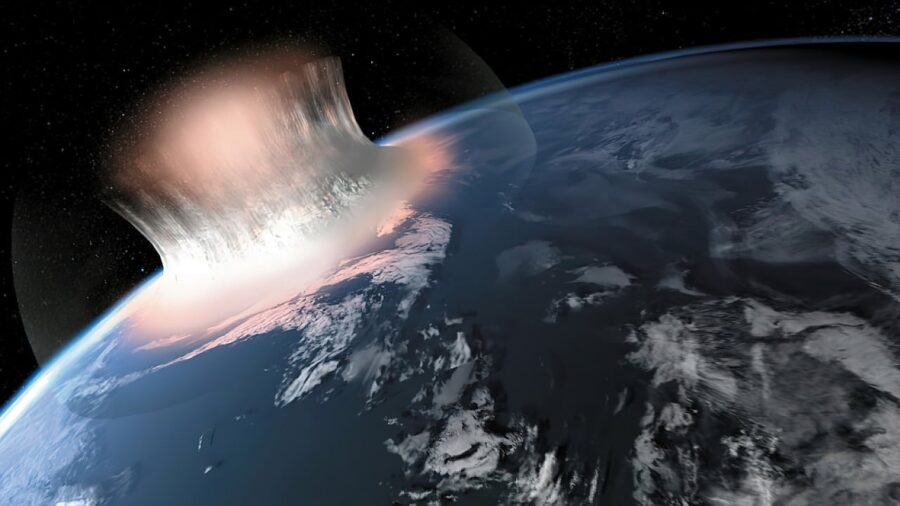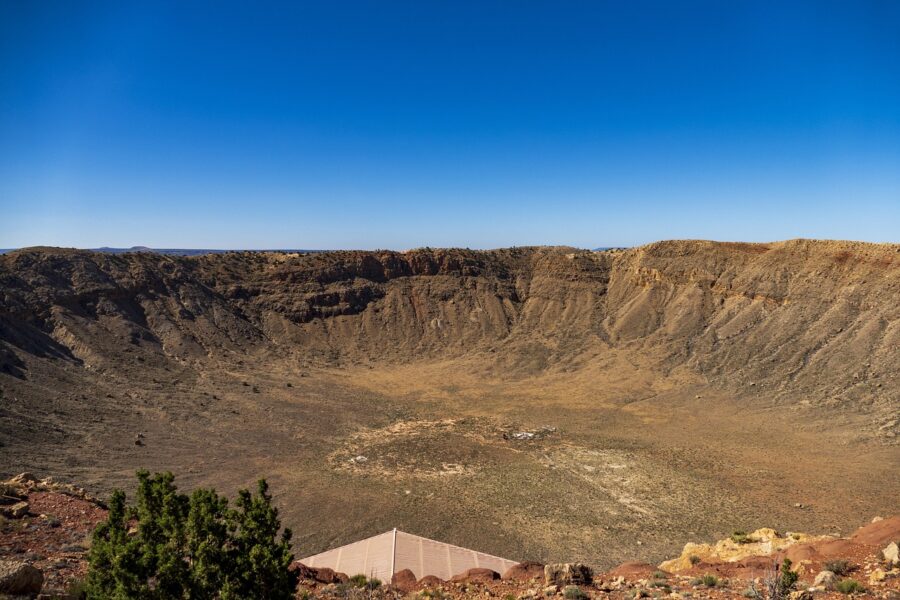Massive Secret Structure Discovered Under An Entire Continent

A massive asteroid crater, what is being called the Deniliquin structure, may have been discovered beneath Australia. That’s what geologist Andrew Glikson has found in his research. It might also be one of the largest craters ever discovered on Earth.
Through an essay in The Conversation, Glikson described his discovery of the Deniliquin structure beneath Australia. The study was published in the Tectonophysics journal and revealed a diameter of over 320 miles for the impact site.
Geologist Andrew Glikson says he’s discovered a massive asteroid crater at the bottom of the ocean.
That’s incredibly massive compared to the previous record holder of the Vredefort Crater in South Africa. The Vredefort Crater was only 100 miles in diameter. So, this discovery would mark the largest impact crater found to date.
It’s been a long time coming for information on the Deniliquin structure. It was first theorized in the 1990s by Tony Yeates, who continues to co-author more research on the topic. The large structure would not be confirmed until a 2020 study of something beneath New South Wales.
“When an asteroid strikes, it creates a crater with an uplifted core. This is similar to how a drop of water splashes upward from a transient crater when you drop a pebble in a pool.”
-Geologist Andrew Glikson
The next step was confirming whether or not an asteroid impact caused this structure. This could tell us more about how craters have shaped our planet. It could also tell us more about the history of our planet in how the Chicxulub crater was believed to be caused by the asteroid that wiped out the dinosaurs.
But for being such a massive crater, the question might arise of how it was hidden for so long. As Gilkson wrote, “The history of Earth‘s bombardment by asteroids is largely concealed.” This is due to how craters are formed.
So, when did this impact happen? The research suggests that it occurred over 445 million years ago.
Gilkson describes this phenomenon: “When an asteroid strikes, it creates a crater with an uplifted core. This is similar to how a drop of water splashes upward from a transient crater when you drop a pebble in a pool.”

Millions of years of erosion can also conceal the central dome of these craters. The collision of Earth’s tectonic plates can also cover up such structures.
There are also plenty of clues that can be found to trace this discovery to an asteroid crater. Ripples in the crust could suggest that the high temperature of the impact caused them. Radial faults are also present that are common to most crater impact sites.
So, when did this impact happen? The research suggests that it occurred over 445 million years ago. This may link it to the Late Ordovician mass extinction event, said to have wiped out 85 percent of Earth’s life.
Even with so many intriguing possibilities, more research is required on the Deniliquin structure. Gilkson suggests that deep drilling could provide further proof of this being an asteroid crater. Currently, the research is only based on the surface of the crater.
What’s worth noting here is how this discovery changes our perception of extinction events. The Chicxulub impact is less than half the size of the Deniliquin, which was thought to have caused the extinction of the dinosaurs.
The research on the Deniliquin structure has been slow, but this new information might yield more crucial research. If an asteroid caused it, the more compelling question remains: How big was that asteroid?
The Deniliquin may become the most fascinating among all the impact craters on Earth. There’s no telling how many secrets lie within its core about Earth’s millions of years and what affected life on our planet.












